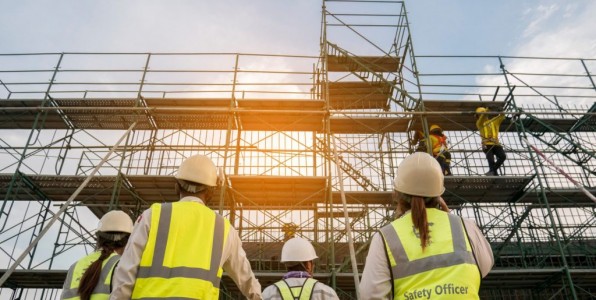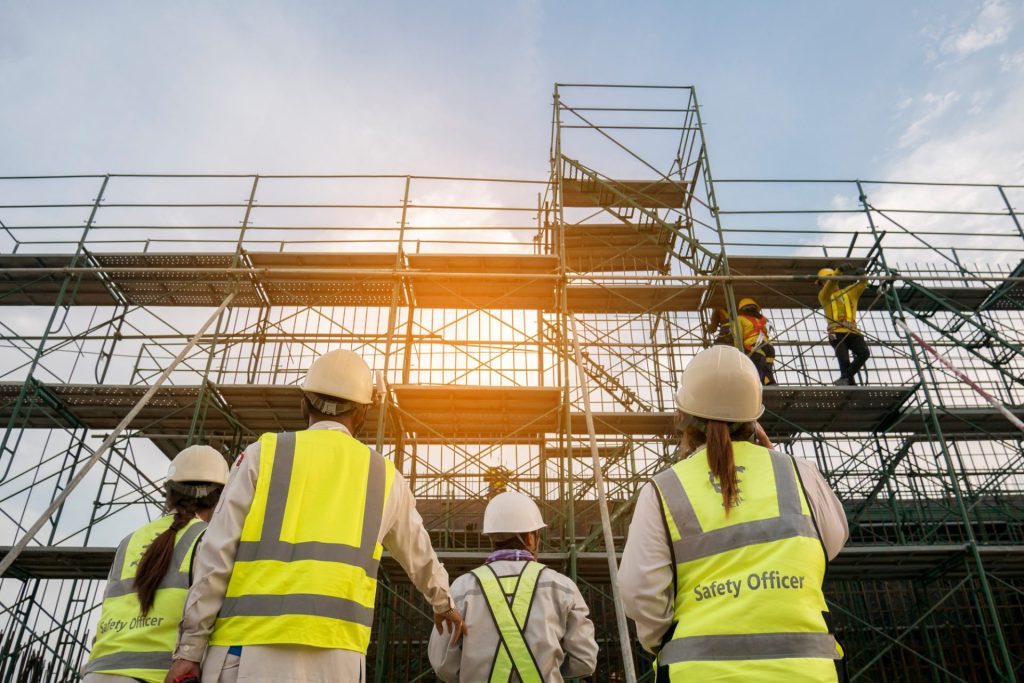Choosing The Right Scaffolding System For Your Project Needs

Choosing The Right Scaffolding System For Your Project Needs
The post Choosing The Right Scaffolding System For Your Project Needs appeared first on UK Construction Blog.
When it comes to construction projects, the success and safety of your endeavours hinge upon making the right choices. One critical decision that should never be taken lightly is selecting the perfect scaffolding system for your project needs. Scaffolding is vital in construction projects, providing an efficient, secure, and safe way for workers to access heights and carry out their tasks.
But with various types of scaffolding systems available in the market, it can be overwhelming to determine which is most suitable for your project needs. Remember that using the wrong scaffolding system for your project can pose serious risks to all construction workers and nearby residents. Statistical reports reported 67 cases of falls from scaffolding in 2022.
Thus, selecting the appropriate scaffolding system is critical to ensure safety, efficiency, and cost-effectiveness. This article highlights the critical factors to consider when choosing a scaffolding system that not only meets your requirements but surpasses your expectations.

1. Consider the type of project
The first step in choosing the right scaffolding system is to consider the type of project you’re undertaking. Different projects require different scaffolding solutions. Here are some common project types and the scaffolding systems that suit them:
- Construction projects
For traditional construction projects like buildings, bridges, or large structures, frame scaffolding is often a reliable choice. Its sturdy design and versatility make it suitable for supporting workers and materials at various heights. It’s also known for its adaptability and easy assembly, essential for large-scale construction.
- Renovation and maintenance
When your project involves renovation or maintenance work on an existing structure, using safety equipment like SkelScaff’s mobile scaffold system with wheels can be a convenient choice. From the name itself, mobile scaffolding is particularly designed for projects that require easy mobility. Since it’s equipped with wheels or casters, you can move it around the worksite with relative ease. Mobile scaffolding is also useful for projects where access points change frequently or work must be carried out in various locations.
- Industrial projects
Modular or system scaffolding is preferred in industrial settings involving heavy loads and complex structures. These systems are known for their adaptability and strength, making them a preferred choice for industrial applications.
- Events and temporary structures
If your project relates to events, stages, or temporary structures, consider using tower scaffolding. Tower scaffolding, characterised by its vertical design, is easy to assemble and disassemble, making it suitable for situations where quick setup and removal are paramount.
2. Assess safety requirements
When selecting the right scaffolding system, it’s essential to evaluate the safety requirements specific to your project. Key safety factors to consider include the following:
- Height and load capacity
Determine the height at which scaffolding will be used and the maximum load it needs to support. This will guide your choice between light-duty and heavy-duty scaffolding systems.
- Working conditions
Assess environmental factors, such as weather conditions, terrain, and hazards. Scaffolding systems with enhanced stability or weather-resistant properties may be necessary in certain situations.
- Regulatory compliance
Ensure the scaffolding system meets all local, national, and international safety standards. Compliance with the National Access and Scaffolding Confederation (NASC) scaffolding requirements is vital for workers’ safety and avoiding legal issues.
3. Evaluate accessibility needs
Access to different areas of your project is a crucial factor in choosing the right scaffolding system. Be sure to consider the following aspects:
- Platform space
Determine the amount of space required for workers, tools, and materials. Some scaffolding systems offer larger platforms for increased workspace.
- Adjustability
Assess whether you need a scaffolding system that can be easily modified to various heights and positions. This can save time and effort in repositioning the scaffolding.
- Mobility
If your project involves frequent movement of the scaffolding, consider systems with wheels or casters. Mobile scaffolding is convenient for projects where access points change regularly.
4. Budget considerations
Cost is always a significant factor in any construction project. To make an economically sound choice, consider the following budget-related points:
- Purchase vs. rental
Determine whether it’s more cost-effective to purchase the scaffolding system or to rent it. Rental may be suitable for short-term projects, while long-term projects may benefit from ownership.
- Maintenance costs
Consider the maintenance requirements of the scaffolding system. Some systems are more cost-effective in the long run due to their low maintenance needs.
- Additional features
Assess whether additional features—such as guardrails, safety nets, safety harnesses, or weather protection—are required. These features may add to the overall cost but can enhance safety and efficiency.
5. Durability and longevity
The durability of your chosen scaffolding system can impact your project’s overall cost and efficiency. Consider the following factors:
- Material
Scaffolding systems are typically made from steel, aluminium, or wood. The choice of material should align with the project’s requirements and expected duration.
- Corrosion resistance
If your project is located in an environment with high humidity or exposed to saltwater or other corrosive elements, selecting a scaffolding system with corrosion-resistant features is vital. Corrosion can weaken the scaffolding and necessitate frequent maintenance or replacements.
The bottom line
Selecting the right scaffolding system for your project involves a comprehensive evaluation of project type, safety requirements, accessibility needs, budget considerations, and durability. Considering these factors will ensure you make an informed decision that promotes safety, efficiency, and cost-effectiveness in your construction or maintenance project. Remember, the right scaffolding system can significantly impact your project’s success, so choose wisely to build with confidence.
Comments are closed